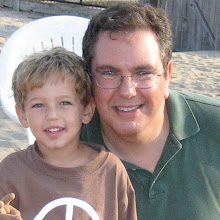
I sell cameras and photography equipment. Mostly on eBay these days since I closed my retail store in 2007. I occasionally have vintage and collectable cameras available. They’re usually from a client for whom I’m selling on consignment or cameras I pick up in my dealings. Once in a while, I go into my own collection and offer up one of my own cameras. I never really want to sell out of my collection but I’ll decide to see what I can get for a piece and if the price is right, I’ll part with the item.
I recently put a cool little camera on eBay. It’s a Pentax Auto 110 Super SLR camera. Pentax made this camera in 1982 and it was an interchangable lens SLR camera that was miniature and took 110 ‘Instamatic’ cartridge film. Pentax made an entire system of lenses and accessories for this camera. At the time most of us who worked in the camera business thought it was a joke but it was impressive how technically advanced the camera was for its size and price.
So it’s 2009 and I’m going through a cabinet and there it is, a pristine Pentax Auto 110 Super with its basic lens. I wonder what it’s worth? Looking at my reference books, magazines and the Internet I draw the conclusion it could be a desirable camera to a collector. Not only a camera collector but someone interested in miniatures or industrial design. OK, up it goes on eBay. I often utilize an eBay feature called ‘Make an Offer’. It lets me set a desired price and give buyers the chance to make their best offer on the item. I put the Pentax up for $249.00. Within 2 days I get this email.
Dear traderjims,
$249 ? are you out of your mind !
Don’t insult and don’t get insulted
This is hardly the first time I’ve been challenged about an asking price. And this was nicely worded compared to other comments I’ve heard. Of course, the knee jerk reacion is to fire back something like ‘mind your own business’ but for two reasons, I suppress the urge to do that. First, this is someone who took an interest in the camera and perhaps can become an ally and a future client. Second, I can answer the challenge in a manner that doesn’t express conflict. In this case, here was my answer.
“Fair question. I have always been amazed at how much someone is willing to pay for something they want. I have no urgent need to sell this item. It is a pristine example of a special piece of photographica. If someone is'nuts' enough to make me an offer on it then I can use the money. To sell it for 50.00 or 100.00? Why? It's too cool! You can ask, why pay thousands for a faceted shiny rock that has the sweat & blood of oppressed people on it that is worth half of what you bought it for after you've paid for it?
Because it means something to someone who always dreamed of wearing a diamond. It's all perception my friend. You've inspired my next blog entry.
Thank you. Jim
-traderjims”
And so he did. Please know that the line about diamond miners seems a bit self-rightious to me on re-read but, I’m sharing so forgive me.
And my new friend’s reply?
“Dear traderjims,
that was great ! and good luck to you.”
I’m not trying to rip anyone off. It’s wrong and not good for business. When I sell anything new or common, I try to have the lowest price. When I sell on consignment, I often have to bow to the demands of my client and try to get a price that isn’t realistic. I always feel though, I ask a price. I’m not demanding and certainly it is the buyer’s choice to buy, make an offer or move on.
I had been planning to write about what I feel is the proper way to ‘Make an Offer’ on eBay. I put something on eBay for say $29.00 and I receive offers of $1.00. I’ll follow up soon about how that kind of situation is handled.





